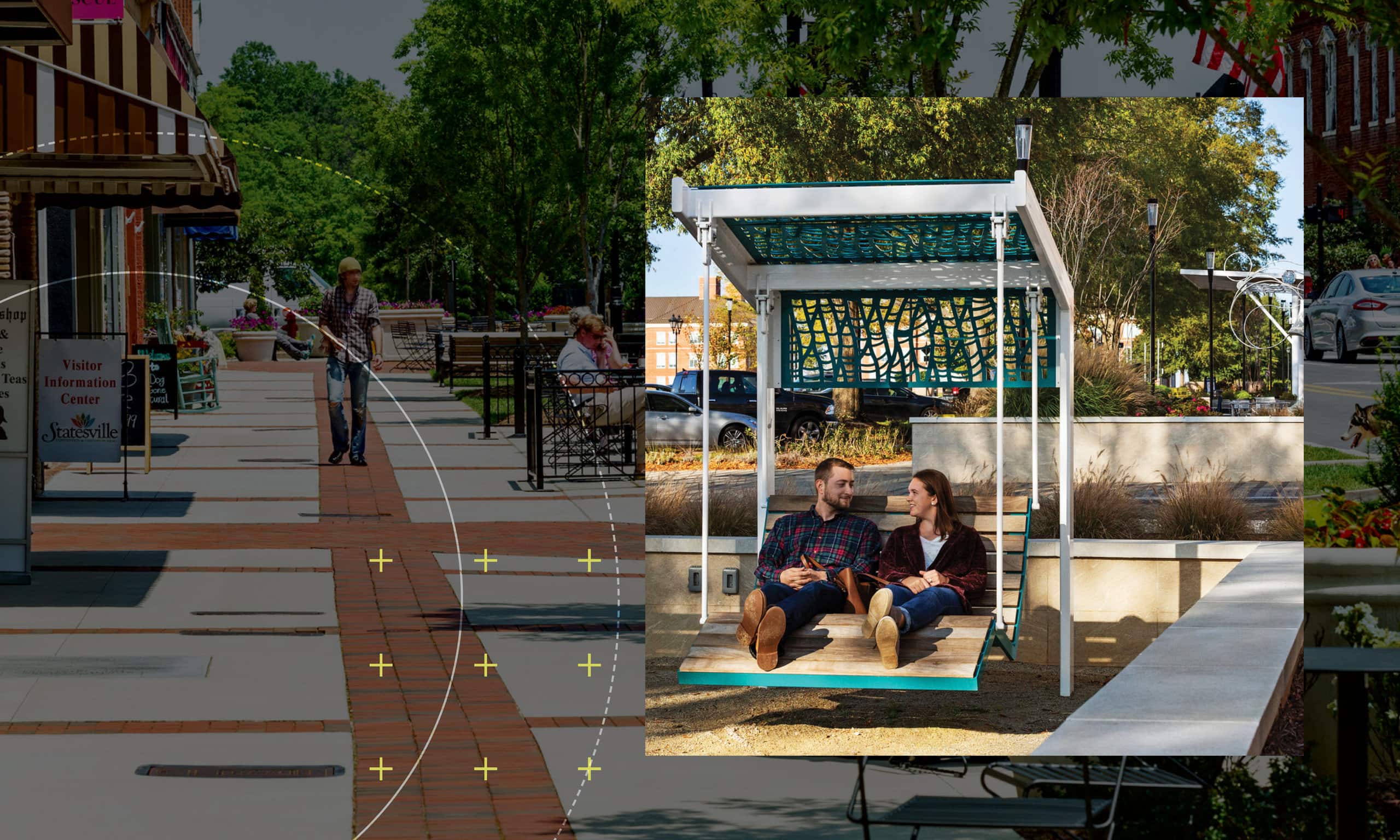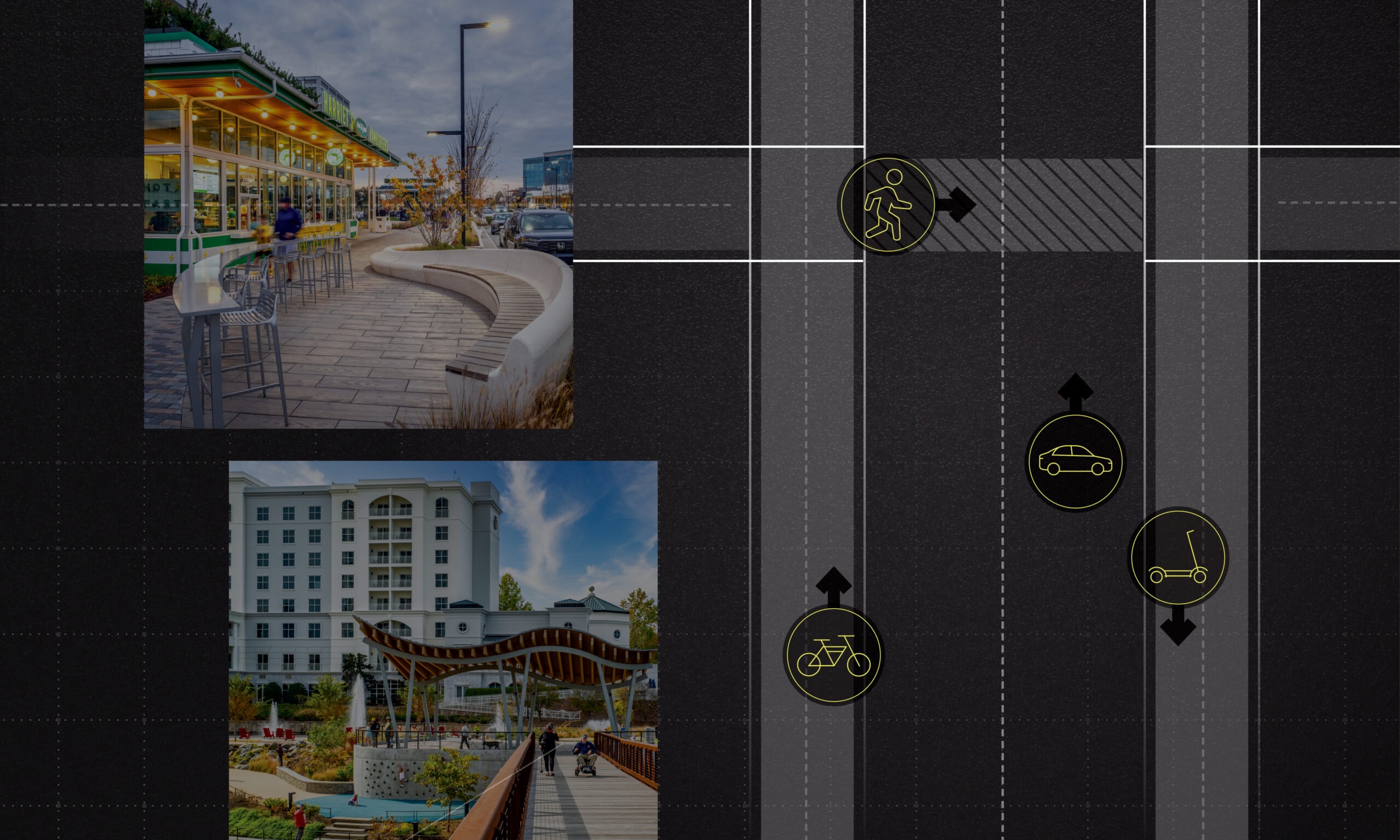Historic downtowns are not just remnants of the past—they are living embodiments of a community’s rich history. Preserving these spaces requires thoughtful material selection that contributes to an authentic experience. From the selection of pavers to the placement of furnishings, we harmonize our design decision with the historical context to improve the functionality, longevity, and, most importantly, the authenticity of a downtown.
Let Concrete Be Concrete
In recent years, many communities have begun to sacrifice quality for cost savings to the detriment of the final product. For example, using stamped brick in concrete rather than investing in brick pavers. These materials that pretend to be other materials inherently diminish the authenticity of a place and negatively impact the overall experience. While every project has unique budget constraints, we should strive to uncover ways to be intentional about the placement of costly materials to key areas, such as the corners for accents.
In Downtown Statesville, we strategically placed brick pavers at key intersections and curb bump outs to minimize costs, while maintaining the visual aesthetic of downtown. This “quality over quantity” approach allowed us to prioritize brick placement in areas of interest and activity without compromising the client’s vision for a quality downtown experience.
We must also be critical about material selection and understand the local context. History will tell us whether stone or brick should be used in the design and if they are tied to the resident culture. Rather than forcing a more expensive option, look at the finish in the concrete and consider the aggregate choices, size, and color. The finish of concrete can add much needed texture and detail to a streetscape at a lower cost than pavers.
Let the Existing Materials Be Part of the Design
New materials have their purpose in every design, but within historic downtowns there is a unique opportunity for the existing materials to have a place in this next chapter. Existing pavers, boulders, trees, and structures all have a role to play in the redevelopment of a streetscape, and newer additions should be designed to complement rather than pretend they are part of the original streetscape.
When designing Bell Tower Green in Salisbury it was important for the materials to serve as a link between the past and present. In addition to new, locally sourced pavers, the pathways and streetscapes incorporated brick from previously demolished historic structures on site. This simple, yet effective design decision not only repurposes existing materials but brings part of the city’s past into the future.
Honor History Rather than Mimic It
One of the most important considerations when working in historical contexts is to respect history. Design has the unique ability to follow history, and as our society evolves, we must rethink our choice of materials and the purpose they serve in today’s context. Sometimes materials and features change due to the way people move around, and in other instances, construction methods have advanced. We must also respond to society’s perception of design features, like historical monumentation, due to what they represent to members of our community.
At Union Square in Downtown Hickory, the site was home to several historical features of great meaning to the Hickory community. To infuse the site with history without replicating it, we chose to preserve a World War I cannon that commemorates members of the community who served during the war. The cannon sits atop an elevated, multi-tiered structure, known as ‘Cannon Hill,’ which is now a signature feature of Union Square.
Bringing Design into the Modern Day
This same consideration applies to the selection of furnishings. While maintaining a connection to the past is essential, incorporating elements that breathe new life into historic downtowns increases their functionality. Furnishings should complement the historical context without replicating dated elements that do not accommodate the needs of today’s users. Being intentional about materiality, colors, and textures is critical to striking the balance between respecting the past and embracing contemporary aesthetics.
To incorporate contemporary styles within Downtown Kannapolis, we partnered with Landscape Forms to design custom swings. With bright teal shade canopies, these playful swings grab the attention of passersby, inviting engagement. Modern, colorful furniture is distributed throughout the different outdoor rooms, providing a fresh and contemporary aesthetic reflective of Kannapolis, a city that is reinventing itself.
Preserving the authenticity of downtown environments is a delicate balancing act and the selection of materials and furnishings is an integral part of the design process. A thoughtful approach considers the past, present, and future needs of a community to ensure we are creating spaces that withstand the test of time and celebrate the unique identity of these communities.






